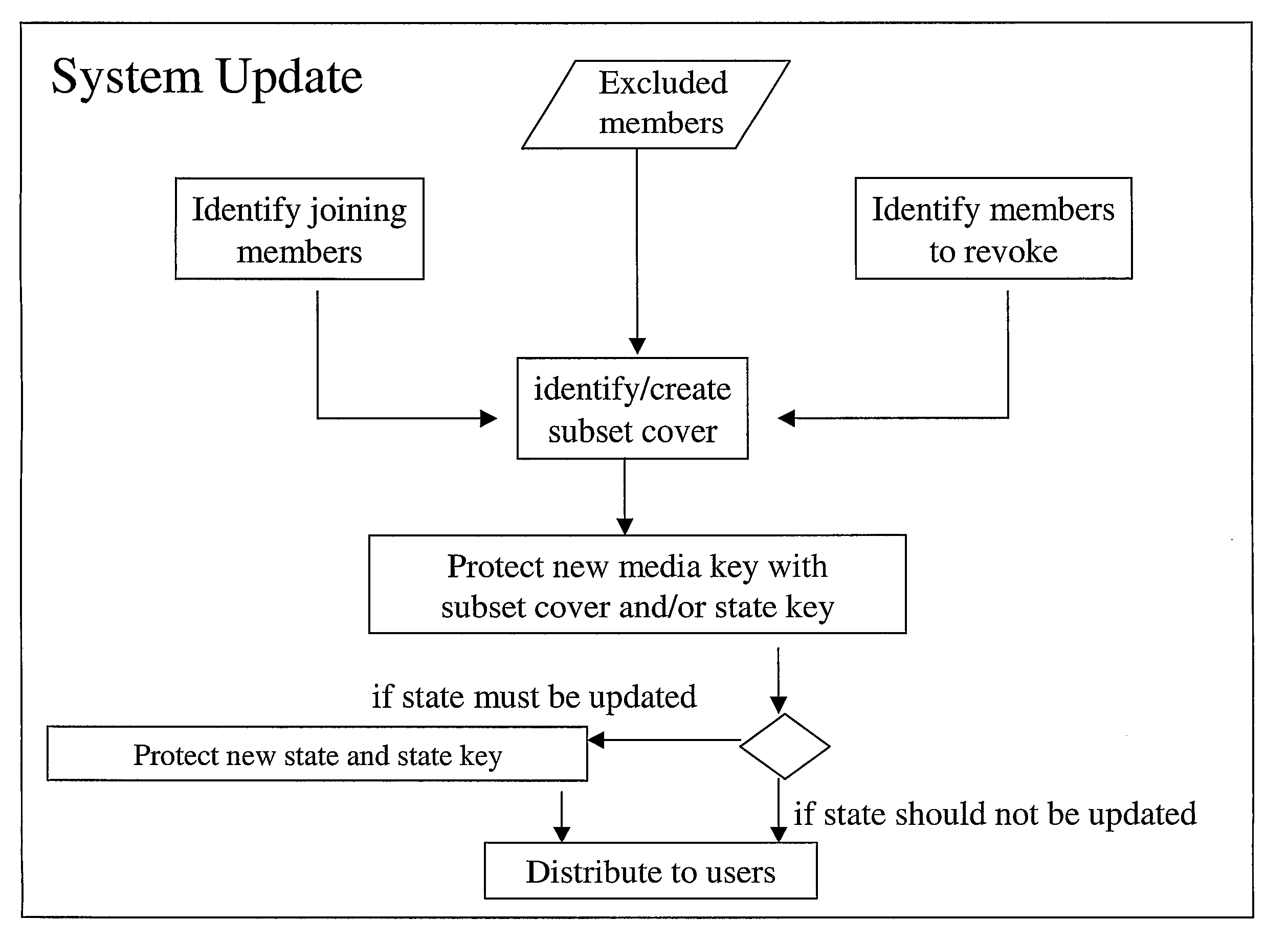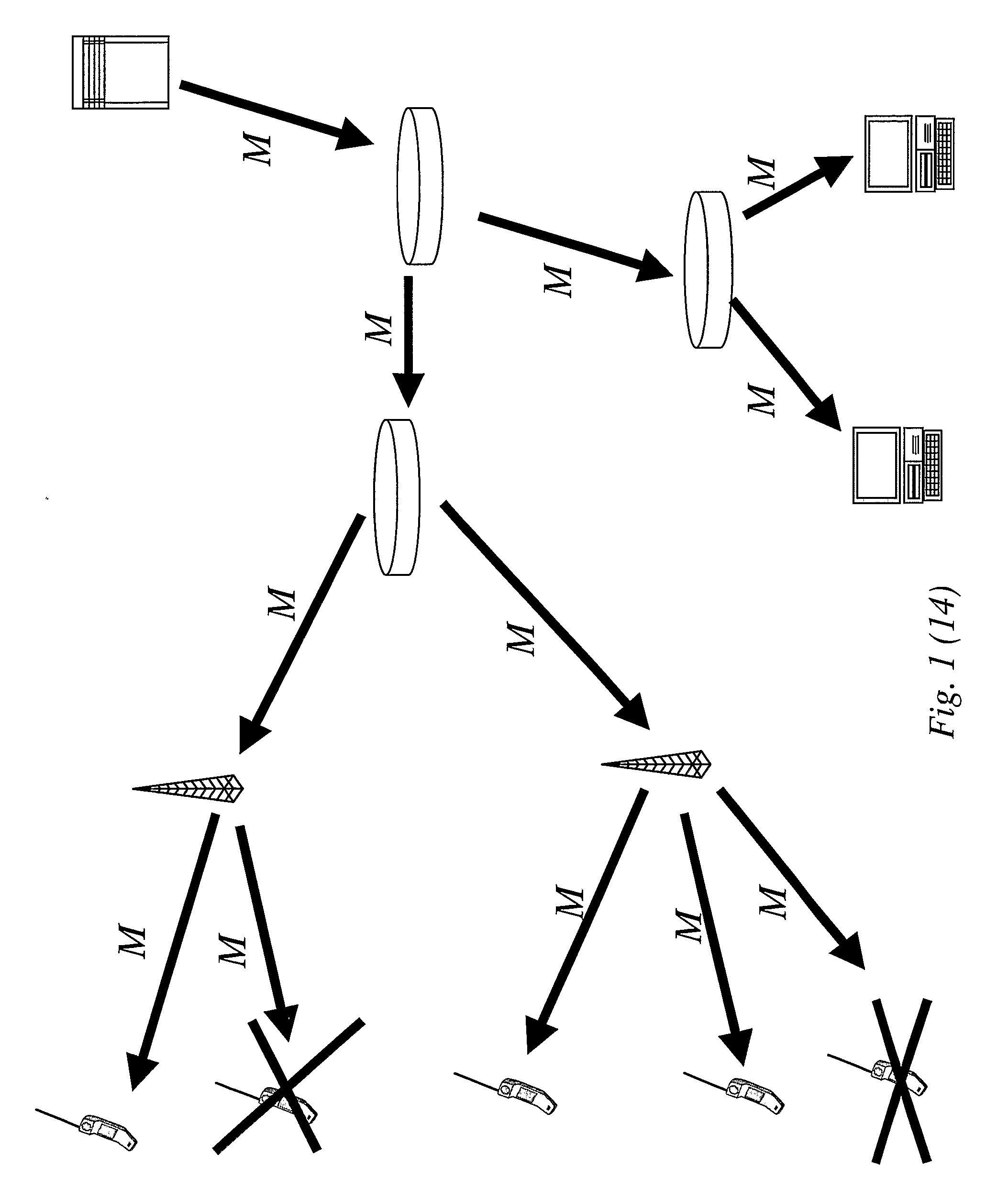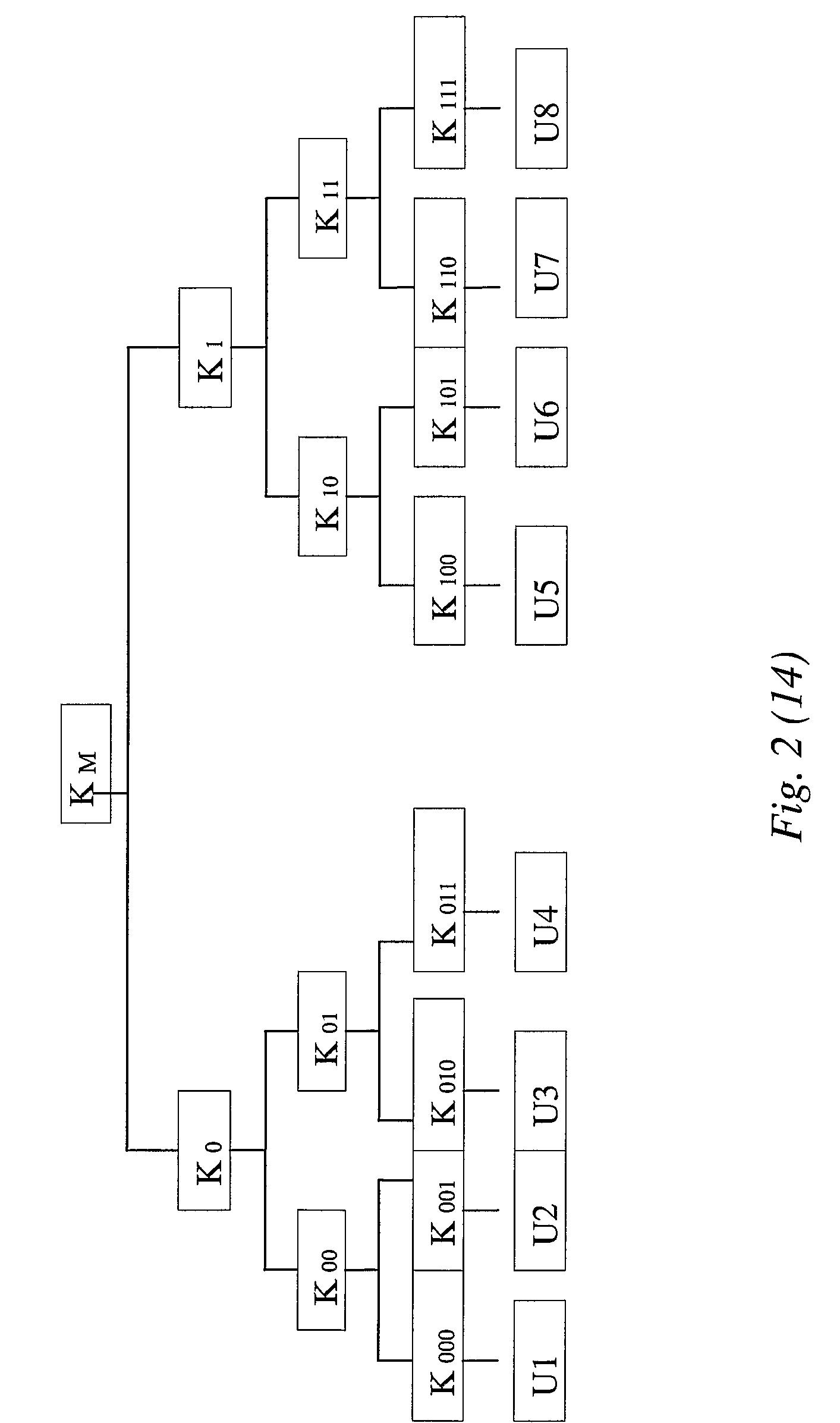Key Distribution in Systems for Selective Access to Information
a technology of information and key management, applied in the field of key management in systems for selective access to information, can solve the problems of increasing both computational cost and bandwidth consumption, system is state-full or state-dependent, and the participant is able to easily re-catch the session, so as to reduce the size of the key management message directed, reduce the size of the group key management message, and achieve acceptable security level
- Summary
- Abstract
- Description
- Claims
- Application Information
AI Technical Summary
Benefits of technology
Problems solved by technology
Method used
Image
Examples
first embodiment
[0115] a normal tree is created in the first step and all users without state key are marked as active users of the group. By doing so it will then be easy to calculate, in the second step, the subsets using a general cover method. To see this, consider FIG. 5B where leaves 8, 9, 10, 13, and 15 have the state key tree, and leaves 11, 12, and 14 do not have the state key. According to the first step, leaves 11, 12, and 14 are marked as active. In FIG. 5B leaves are shown shadowed to remind that they do not have the current state. If we want to revoke leaves 13, and 15 (marked with a cross in FIG. 5B), the general algorithm would have created the sets S1,3 to cover all leaves in the left branch of the root, S6,13 to cover leaf 12, and S7,15 to cover leaf 14. A key update message of the form Eq. 4 or Eq.4′ is used. It is then noticed that leaves 11, 12, and 14 although covered by the sets specified above still will not be able to retrieve the new key as these leaves do not have the cur...
third embodiment
[0118] said first mark-up step, comprises marking the leaves according to the following rules:[0119]All leaves without state key are marked undefined.[0120]All leaves with state key are either marked user or not user as is the case.
[0121]In FIG. 5C the undefined leaves are marked with lines and leaves with a state key are marked with dots. Further, in FIG. 5C, leaves 13 and 15 are cross-marked to indicate that these leaves shall not be users.
[0122]Said second combined marking and calculation step comprises the following algorithm applied to a tree as illustrated in FIG. 5C:[0123]For each level in the tree, starting from the leaves, go one level up in the tree and for each node at that level do the steps:[0124]a. If both the left and right child are marked as undefined, mark the node as undefined,[0125]b. If one child, denoted x, is marked as undefined but the other child, denoted y, is either marked user or not user then mark the node as y and mark all leaves under x as y,[0126]c. I...
fifth embodiment
[0130] a more efficient method of creating the subset covering is disclosed that leads to an optimal cover. This method is based on a coloring algorithm where nodes are given different colors depending on the status of the node. According to this embodiment, said first step involves coloring the leaves. A leaf is colored “red” if it shall be revoked in the current update process, i.e. it belongs to the set UR. A leaf is colored “black” if it is already revoked and does not have the current state key, i.e. it belongs to the set U0. Finally, a leaf is colored “blue” if it shall remain user of the group in the current update i.e. it belongs to the set UA. It follows that leaves can only have one of these colors.
[0131]Thereafter the combined marking and calculation second step is performed. The marking proceeds according to the following rules. Nodes are colored that are above the bottom level. The colors of the children are basically “added” to make up the color of the parent. If at le...
PUM
 Login to View More
Login to View More Abstract
Description
Claims
Application Information
 Login to View More
Login to View More - R&D
- Intellectual Property
- Life Sciences
- Materials
- Tech Scout
- Unparalleled Data Quality
- Higher Quality Content
- 60% Fewer Hallucinations
Browse by: Latest US Patents, China's latest patents, Technical Efficacy Thesaurus, Application Domain, Technology Topic, Popular Technical Reports.
© 2025 PatSnap. All rights reserved.Legal|Privacy policy|Modern Slavery Act Transparency Statement|Sitemap|About US| Contact US: help@patsnap.com



